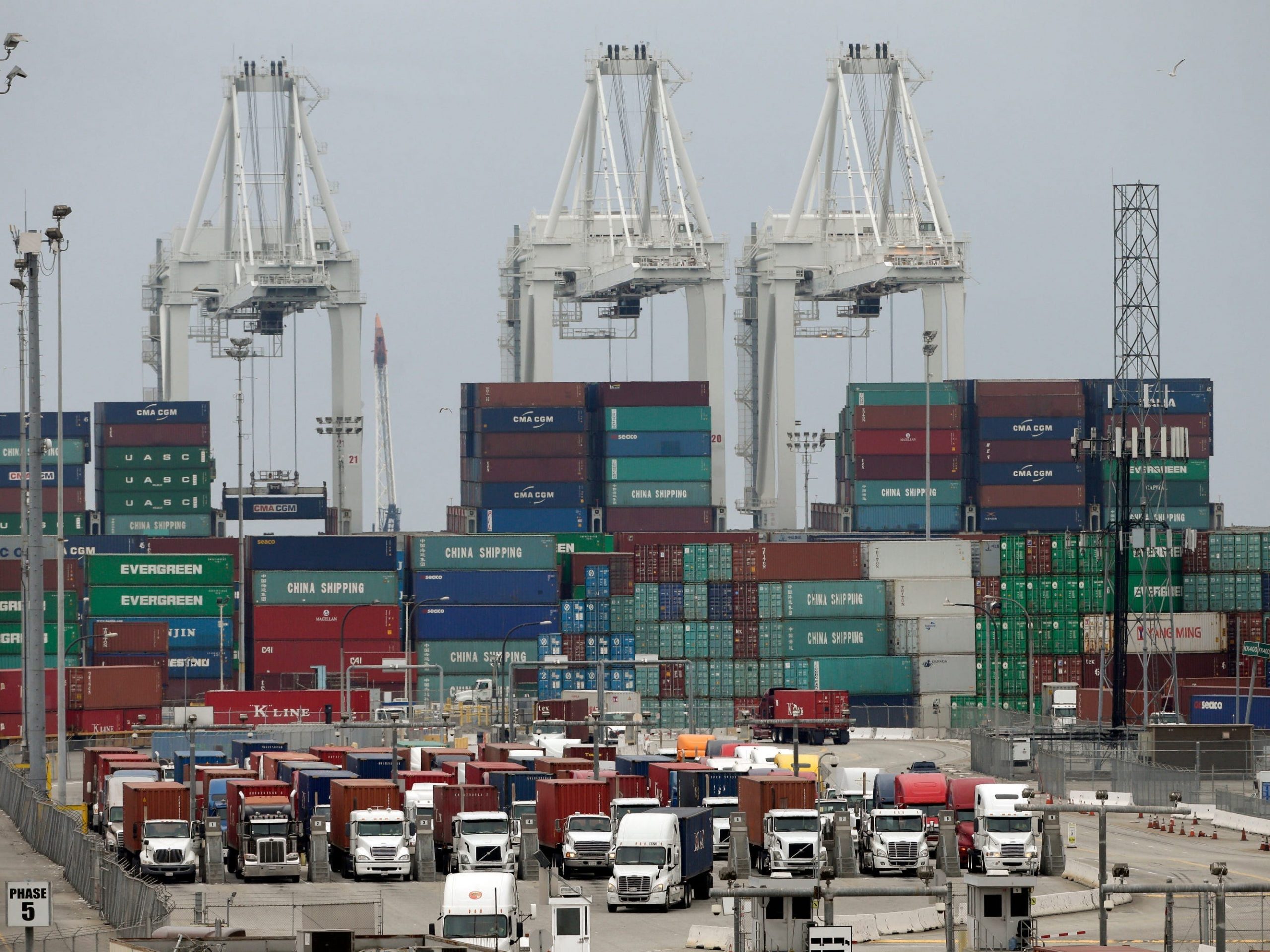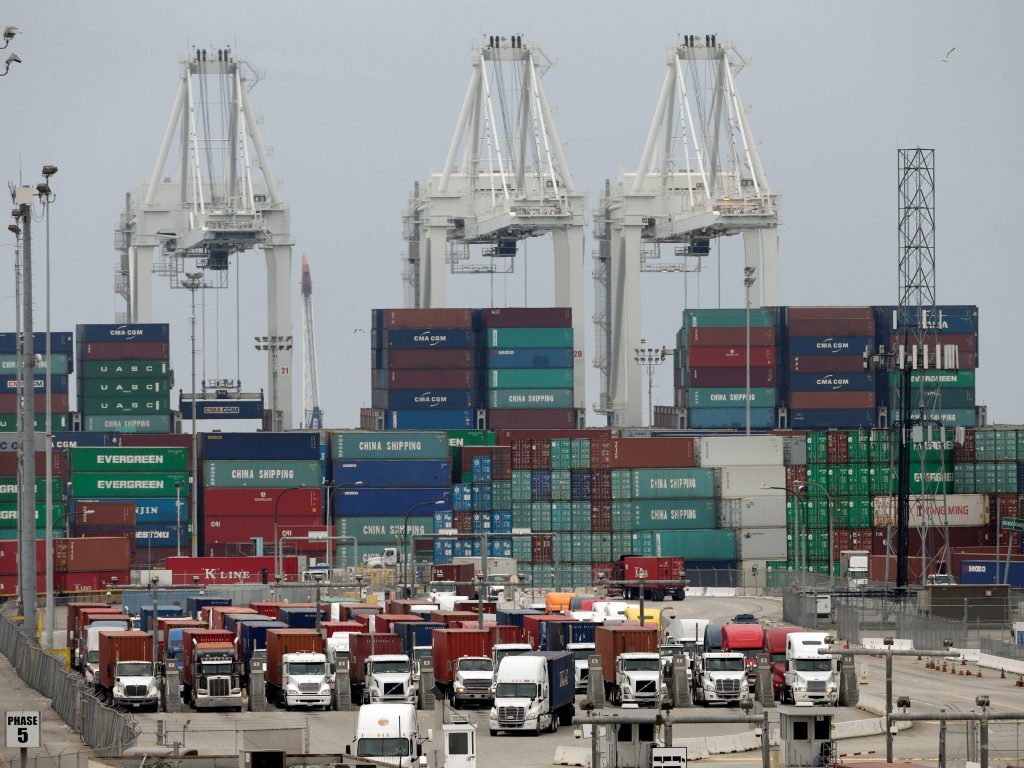
- The 7,000 dockers represented through the ILWU at Port LA are some of the highest paid blue-collar workers.
- They receive nearly three times as much money as the average dockworker due to the nature of their job.
- Christopher Mims breaks down how packages arrive at your door within a matter of days in his new book, "Arriving Today."
- See more stories on Insider's business page.
Dock workers at the Port of Los Angeles have one of the highest-paying blue-collar jobs in the US.
The over 7,000 longshoremen represented through the International Longshore and Warehouse Union (ILWU) that work at the Southern California port are paid over $100,000 a year and receive free health insurance and full pensions, according to a new book from The Wall Street Journal's Christopher Mims. In the book, "Arriving Today: From Factory to Front Door – Why Everything Has Changed About How and What We Buy," Mims breaks down how goods travel from Asia to the US.
The workers receive nearly three times as much money as the average dock worker in the US, according to data from Glassdoor which lists the average salary as $36,710 a year. But, Mims contextualizes the workers' high pay within the scope of the ILWU's strength, as well as the skill and danger associated with the job.
"The longshoremen in TracPac's cranes are real-life examples of the science fiction staples of pilots in giant mechanized suits, except that instead of battling city-destroying Kaiju, they rise each morning to cooperate with equally tremendous seaborne giants transporting consumer goods from one continent to another," Mims writes.
Longshoremen represent a crucial part of the complicated dance that makes up the global supply chain. The ports in Los Angeles and Long Beach are responsible for about half of US imports. In Los Angeles, the dockworkers work in one of the most heavily automated ports in the world. As of 2020, a third of the port is fully automated.
Longshoremen work alongside massive robots to unload and reload boats, including a terminal called the TracPac that is nearly fully automated with three-story-high robot cranes that move containers within the port. Mims points out that some workers are in close proximity to the hulking robots that could crush a human in an instant, opening them up to serious risks of death or injury.
Port LA has 28 massive crane robots called "autostrads" and is home to the largest robot in the world by dimension.
"They accelerate quickly but move slowly, topping out at a speed barely above a brisk walk. They're tall and gangly, like marionettes," Mims writes about the all-electric robots that roll silently on rubber tires in the TracPac. "In their group behavior - in the way they literally swarm the containers deposited for them on the quay - they seem like ants, or more accurately, like robots imbued with ant-like logic."
Members of the ILWU have been able to receive higher wages than most blue-collar workers due to the crucial role they play in the economy by maintaining the flow of goods in and out of the US. While the port's automation has drastically cut down on the number of human workers at the ports, the ones that remain have become increasingly valuable. They are part of a process that takes as little as 24 hours to fully unload a ship.
Mims pointed to instances when worker strikes threatened to derail the US economy, including in 2002 when President George W. Busch interceded to halt strikes at 29 West Coast ports.
While workers represented by the ILWU have been able to negotiate for higher wages, it doesn't reflect the pay of the hourly workers who are called onto the job when the ports need extra workers. These workers do not receive benefits and have a starting pay of about $25 per hour, according to Mims.
Longshoremen are some of many workers that help keep the supply chain flowing. Today, these workers are more important than ever as massive supply-chain snags threaten to disrupt the global economy. In the Port of Los Angeles, longshoremen face a record backlog of ships.
Do you work in shipping or trucking? Reach out to the reporter from a non-work email at [email protected]

